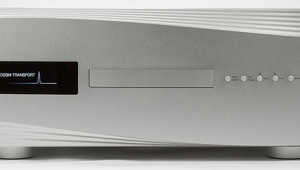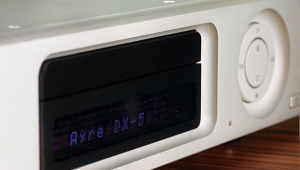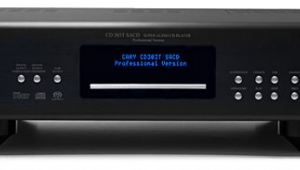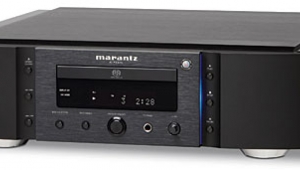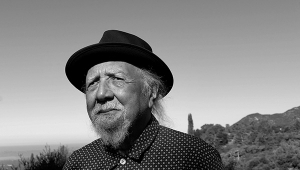| Columns Retired Columns & Blogs |
dCS Scarlatti SACD/CD playback system Page 2
Much has happened in the six years since my review of dCS's Verdi-Purcell-Elgar. dCS has greatly upgraded its products' appearance, to give the Scarlatti stack a more uniform and graceful look; their attractiveness speaks for itself. The external build quality has been improved, and, of course, the price has doubled almost exactly, from $33,985 to $67,997 (not including the Upsampler). I hate when that happens, but previous dCS systems always had the feel of expensive works-in-progress; the Scarlatti stakes a stable, finished claim to the state of the art.
I started my evaluation by playing many familiar CDs and SACDs through this system, including ones I'd used for the Verdi-Purcell-Elgar review, but too much has changed and too much time has gone by for me to make any direct and meaningful comparisons. However, in listening to the earlier dCS stack—using, among other SACD/CDs, the Rolling Stones catalog (no longer available on that format)—the original vinyl editions had been far superior in terms of transparency and, especially, three-dimensionality; the SACDs sounded noticeably darker, slower, thicker, and more opaque in 2003.

dCS Scarlatti Upsampling SACD/CD Transport
Needless to say, my analog front end has improved considerably since then. Yet now, listening to the Scarlatti, when I again compared the UK editions of the Stones' Aftermath, the SACD was much closer to the LP in terms of three-dimensionality, rhythmic nimbleness, and the sensation of "thereness." The LP still won the transparency battle, and still sounded better overall, but the differences now seemed greatly diminished; the SACD was more dynamic overall and more robust on bottom than the LP, while avoiding the sluggishness and bottom-end thickness it demonstrated six years ago in my listening for the Verdi-Purcell-Elgar review.
In fact, the two formats were now more similar than different, particularly in terms of the sensation of an absence of a grain more "felt" than consciously heard, and lurking just beneath the surface of the SACD's sound. In other words, the Scarlatti was able to produce the pleasing, relaxing, "calm" sensation that vinyl regularly elicits, but that digital rarely manages for many listeners. That might have been a result of the Scarlatti's much-improved resolution of microdynamics over the earlier dCS stack, as well as what sounded like a far better analog output stage.
Telltale digital artifacts once easy to identify, even with SACDs, were essentially gone, and especially edge and grain. The Scarlatti's top-end and transient responses were as pure, clean, and natural as I've heard from any digital component.
I was surprised to find that, until I switched, I didn't know which was playing: vinyl or SACD. As I wrote that last sentence, it happened again: I had the two editions of Aftermath synced and was convinced I was hearing the SACD. It was the LP playing on the Continuum Audio Labs Caliburn-Cobra-Castellon combination. When I switched, the differences weren't worth mentioning, which says a great deal about both of these extravagantly priced source components. Fewer of either technology's artifacts were apparent.

Scarlatti DAC
Other comparisons of SACDs to LPs made it clear that the Scarlatti sounded less congested and more transparent than, and microdynamically superior to, the Verdi-Purcell-Elgar—as best as I could recall the latter's sound. The Scarlatti's vastly superior sound suggested that dCS has done far more than merely tweak the earlier system.
Melting snow
Neil Young once described early digital sound as "like getting hit with ice picks." Now the ice is "tiny," or maybe more like "snow," he said recently. The Scarlatti's SACD performance melted that snow completely. I heard Christian Tatzlaff perform Shostakovich's Violin Concerto 1 with the New York Philharmonic last night at Avery Fisher Hall, then ran home and played Area 31 (I don't have the Shostakovich on disc). No recording can sound truly "live," but this SACD, through the Scarlatti, floated the violin effortlessly and delicately in three dimensions, reproducing its tonal and textural qualities as close to "live" as I've heard from this disc, neither making it too edgy nor smothering it in oppressive, detail-obscuring warmth—an all-too-familiar ploy of some component designers.
The Soundmirror-mastered RCA Living Stereo SACD/CDs had never sounded so harmonically right or spatially dimensional. Kenneth Wilkinson's 1961 Walthamstow Town Hall recording of Artur Rubinstein performing Chopin's Piano Concerto 1, with Stanislaw Skrowaczewski and the New Symphony Orchestra (RCA Living Stereo 67902), was like time travel: in any digital version I'd heard, the familiar sound of this hall (I've been there) subtly suggested behind Rubinstein's piano had never sounded so effortlessly solid, three-dimensional, and texturally and harmonically believable. The same was true of the richly textured cellos and basses which dug deep without turning to mush. The CD layer? Not so much.
When I then played an original "shaded dog" of this recording (LP, RCA Living Stereo LSC-2575), an even more believable, more finely resolved, more expansive yet delicate version presented itself—albeit with a few pops, clicks, and other vinyl artifacts some might be unwilling to tolerate (but that I easily ignored). As with the Rolling Stones SACDs, even I could make a case for either format, LP or SACD—and that's a new one for me.
- Log in or register to post comments

